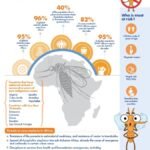WORLD AIDS DAY

World AIDS Day takes place on the 1st December each year. It’s an opportunity for people worldwide to unite in the fight against HIV, to show support for people living with HIV, and to commemorate those who have died from an AIDS-related illness.
Founded in 1988, World AIDS Day was the first ever global health day.December 1 marks the 30th anniversary of World AIDS Day. Launched in 1988, the annual observance highlights worldwide efforts to combat HIV/AIDS. World AIDS Day is also an occasion to show support for those living with HIV and to remember those who have died from the infection.
LEARNING WITH TIMES
AIDS: Acquired immunodeficiency syndrome, a syndrome caused by infection with the human immunodeficiency virus (HIV), with ensuing compromise of the body’s immune system. Features include deficiency of certain types of leukocytes, especially T cells; infection with opportunistic infections that take advantage of the impaired immune response,
The human immunodeficiency virus (HIV) is a type of virus called a retrovirus, which can infect humans.A HIV (Human Immunodeficiency Virus) infection is considered serious because the virus attacks a type of immune cell, (CD4+ cells) that protect the body from all kinds of diseases.AIDS (Acquired immunodeficiency syndrome), on the other hand, is the final stage of HIV, which can today be avoided altogether with the right treatment. During this time, the resistant to fight infections is low and the risk of developing disorders becomes higher.
The most common ways in which HIV is spreading throughout the world include sexual contact, sharing needles, and by mother-to-child transmission during pregnancy, labor (the delivery process), or breastfeeding.
AIDS dates back to 1981.The test that for decades had been most commonly used for diagnosing infection with HIV was referred to as an ELISA. If the ELISA found HIV antibodies, the results needed to be confirmed, typically by a test called a Western blot.
India,after South Africa, and Nigeria has the world’s third largest HIV populations, had around 2.14 million people living with HIV in 2017, accounting for 0.22% of people in the 15-49 years age group in the country, according to prevalence estimates released by the National AIDS Control Organisation (NACO) .
At 2.04%, Mizoram had the highest adult HIV prevalence in the country, followed by Manipur at 1.43%, and Nagaland at 1.15%. Telangana at 0.70%, Andhra Pradesh 0.63%, Karnataka 0.47%, Goa 0.42%, Maharashtra 0.33%, and Delhi 0.30% were the other states/Union Territories with adult HIV prevalence higher than the national average.






0 Comments